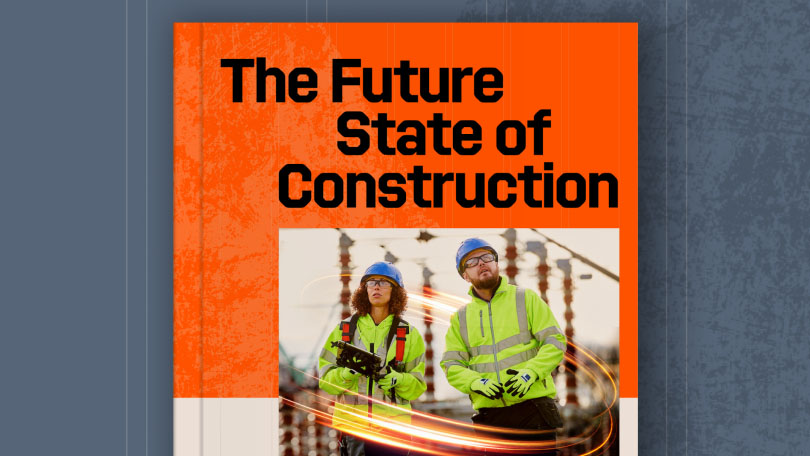— 5 min read
Executive Oversight: Aligning Resources with Project Timelines


Last Updated Aug 28, 2025

Zoe Mullan
27 articles
Zoe Mullan is an experienced content writer and editor with a background in marketing and communications in the e-learning sector. Zoe holds an MA in English Literature and History from the University of Glasgow and a PGDip in Journalism from the University of Strathclyde and lives in Northern Ireland.

Nicholas Dunbar
Content Manager
62 articles
Nick Dunbar oversees the creation and management of UK and Ireland educational content at Procore. Previously, he worked as a sustainability writer at the Building Research Establishment and served as a sustainability consultant within the built environment sector. Nick holds degrees in industrial sustainability and environmental sciences and lives in Camden, London.
Last Updated Aug 28, 2025

Executive oversight - the active involvement of senior construction professionals in managing projects - significantly improves project success and efficiency, particularly when aligning resources with timelines. This requires experienced professionals with strong leadership skills to manage the numerous factors and risks that can alter a construction project's course.
If you think of the timeline of a project and all of its activities like a river, when a risk materialises, it's like a rock in the middle of that river that diverts your current. You're constantly adapting to the divergences in the current, to bring you back to your destination.

Sion Rees
Director
CRIGS-REES Partnerships
Executives must ensure the business supports projects to maintain progress. To accomplish this, companies need proper controls in place, such as programme timelines and schedules with forecasted and linked workforce plans and budgets. This enables teams to identify and manage constraints effectively.
Table of contents
Key Challenges Affecting Timeline Alignment
Several factors can disrupt the timely delivery of construction projects, particularly when maintaining aligned schedules and resources. These factors ultimately represent different types of risk, making risk assessments and management crucial activities.
Whether you're at a business level or a project level, when you're looking at resources, you need to understand the priority for resources, and that largely comes down to risk.

Sion Rees
Director
CRIGS-REES Partnerships
Here are the primary challenges construction professionals face when keeping projects on track:
Supply Chain Vulnerabilities
As demonstrated during geopolitical crises and global pandemics, supply chains can be surprisingly fragile. Unexpected events can wreak havoc on resource availability and deliveries, creating significant project disruptions.
Client Milestones
Another significant challenge involves meeting sensitive client milestones. Many clients rely on specific handover dates to begin profiting from their investment, such as with hotel projects. These hard deadlines leave minimal room for errors or delays.
Limited Specialist Resources
Certain trades and equipment require specialised skills, meaning fewer options exist and those available are highly sought after. This scarcity makes scheduling these resources particularly challenging.
There are only a certain number of piling rigs in the country, and if you don't use them in a certain window, you could lose them, because someone else will have already booked them.

Sion Rees
Director
CRIGS-REES Partnerships
Political and Economic Uncertainty
As governments change, funding for housing and infrastructure projects fluctuates. These shifts can dramatically impact construction projects over the longer term, requiring flexible planning approaches.
Consequences of Poor Resource Management
The challenges above represent just a few unexpected scenarios construction executives routinely face. However, the most significant impacts stem not from the challenges but from inadequate preparation or risk management. Mismanaging resource and timeline risks can lead to:
- Projects exceeding budgets
- Mistakes requiring costly rework
- Overworked or disengaged employees
- Damaged company reputation
Effective Approaches to Resource-Timeline Alignment
Fundamentally, construction companies organise and deliver resources according to their projects. This organisation must cover the entire project life cycle - from pre-construction to the defects period, typically a 12-month timeline where the company addresses client-identified issues.
Construction executives must ensure sufficient resources for each project phase. Resource trackers offer an excellent solution for managing this complexity. These tools show when resources become available as project phases conclude, freeing up needed personnel.
By entering your full project team as individual resources and allocating them against current and future projects, resource trackers reveal peaks and troughs in resource allocation. This visibility helps identify when direct labour becomes insufficient for the project's needs or when projects slow down, potentially leaving staff underutilised.
When resources become stretched, leadership teams must determine whether projects can use temporary resources, such as freelancers, ask existing workers to "flex" their schedules temporarily, or recruit new employees to meet demands.
My preference is to ask employees to flex for a short period so that the business isn't accruing the high costs of freelancers. But you've got to be fair and accept that it can only be a short-term solution.

Sion Rees
Director
CRIGS-REES Partnerships
Using Technology for Improved Resource Allocation
Key performance indicators (KPIs) often prove challenging to define in construction because companies track different resource metrics. Nevertheless, certain standard areas exist that most construction businesses can monitor to build a data foundation for resource decisions.
These include staff hours and your "daily gate" - the number of people signing in and out of the site, typically tracked through sign-in books or digital biometric systems. By monitoring daily sign-ins across the site, you can compare expected resources with actual resources, helping determine whether current resources suffice to deliver expected output and whether the project remains on track.
If you were expecting your ground worker to give you four machines with four drivers and 20 operatives and you only get three machines and 15 operatives, then you know you're going to be 25% down on your output as a rule of thumb. It's an early warning that you need to understand why this has occurred and look to pull in more resources in the short term to recover the delay.
The key principle is using data and technology to drive your understanding. You need to be hitting your KPIs, and you also need to use them to understand how you're going to allocate resources. Using your project management software is what makes this possible.

Sion Rees
Director
CRIGS-REES Partnerships
Connecting Long-term Goals with Resource Planning
Generally, businesses should develop a five-year growth strategy plan, reviewing it annually. Understanding how this strategy affects your resources proves critical for success.
Your resource plan has to align with your business plan - they need to match up, or you won't be able to resource the growth you want to achieve.

Sion Rees
Director
CRIGS-REES Partnerships
For instance, if you aim to increase from nine projects to 12, your resource graph will likely indicate the need to recruit and train an additional project team. This might include three project managers, a design build manager, and a quantity surveyor to deliver the projects. You might also need an additional business development manager to generate the new sales leads necessary for growth. All these extra roles must be considered to meet your growth plan. This planning then filters down to your operational plan, which requires weekly or monthly maintenance.
In conclusion, successful construction executives maintain both project-specific views of resource allocation and timelines while also developing a long-term, strategic perspective on business development. Forward-thinking executives with growth mindsets effectively balance day-to-day project resource management with future-focused planning that enables expansion and success.
Categories:
Preconstruction, Project Management, Resource Management, Risk Management
Written by


Zoe Mullan
27 articles
Zoe Mullan is an experienced content writer and editor with a background in marketing and communications in the e-learning sector. Zoe holds an MA in English Literature and History from the University of Glasgow and a PGDip in Journalism from the University of Strathclyde and lives in Northern Ireland.
View profileReviewed by

Nicholas Dunbar
Content Manager | Procore
62 articles
Nick Dunbar oversees the creation and management of UK and Ireland educational content at Procore. Previously, he worked as a sustainability writer at the Building Research Establishment and served as a sustainability consultant within the built environment sector. Nick holds degrees in industrial sustainability and environmental sciences and lives in Camden, London.
View profileExplore more helpful resources

Control the Chaos: Standardising Document Workflows in Construction Projects
Document control and implementation play a central role in managing risk, meeting deadlines, and delivering projects to spec. As builds become more complex and teams increasingly disperse, the volume and...

Cost-Plus Construction Contracts in the UK
A construction cost-plus contract – sometimes called a cost-reimbursable or prime cost contract – reimburses all project costs and adds a fee to cover the contractor’s overhead and profit. UK...

Digital Construction Technology for Whole-Life Value
For decades, the construction industry has kept a narrow focus on capital cost — the one-time, upfront costs of a construction project. While in the short term this seems like...

UK Construction Progress Reports: Tools for Smarter Site Management
Construction progress reports track completed work, on site issues, costs, and safety so UK project teams can demonstrate progress, secure payments, and stay on programme. Accurate progress data is essential...
